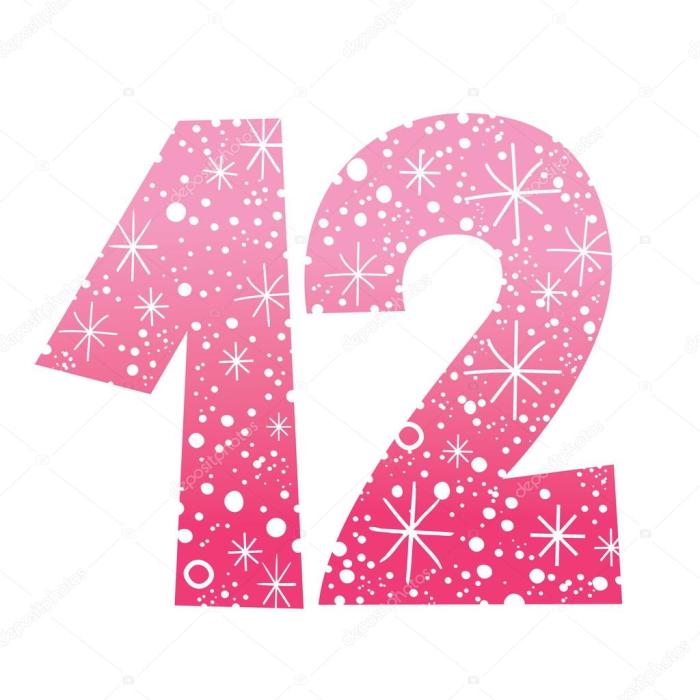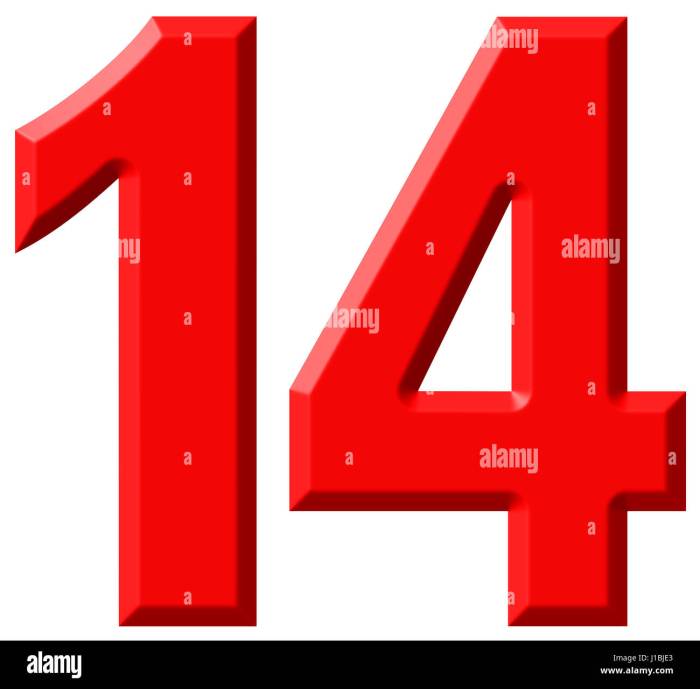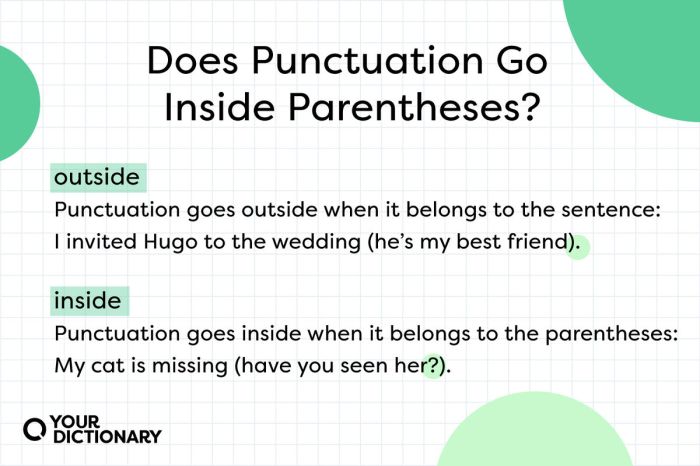How find covetable antiques and collectibles yard sales and thrift shops and other unusual places? This guide delves into the exciting world of uncovering hidden gems at flea markets, thrift stores, and beyond. We’ll explore the art of identifying covetable items, from vintage jewelry to antique furniture, and provide strategies for successful hunting, from maximizing your yard sale visits to understanding seller perspectives.
We’ll also look at assessing value, negotiating prices, and the crucial step of proper storage and preservation for your new treasures.
From understanding the subtle characteristics of a “covetable” antique to navigating the unique challenges of unusual hunting grounds, this guide provides a comprehensive framework for anyone looking to build a collection or simply enjoy the thrill of the hunt. Learn how to evaluate authenticity, research items, and negotiate prices effectively, making the most of your treasure-seeking adventures.
Identifying Covetable Items

Finding treasures at yard sales and thrift stores is a thrill, but knowing what to look for elevates the experience. It’s not just about finding something cheap; it’s about finding somethingspecial*. This involves understanding the characteristics of desirable antiques and collectibles, assessing their condition, and comparing potential values across different venues.Identifying covetable items involves a combination of historical context, aesthetic appeal, and craftsmanship.
Rare finds can be just as valuable as items with a well-established history.
Characteristics of a Covetable Antique or Collectible
Understanding the hallmarks of desirable items is key to successful treasure hunting. These traits often indicate potential value.
- Rarity: Unique pieces, especially those from limited production runs or with specific historical significance, tend to be more valuable.
- Condition: A well-preserved item with minimal wear and tear holds more appeal and often commands a higher price.
- Intactness: Original components, un-restored features, and absence of repairs are usually prized in antiques and collectibles.
- Craftsmanship: Items exhibiting high-quality construction, intricate details, and a mastery of technique are frequently sought after.
- Historical Significance: Items associated with important historical events, figures, or movements can have significant value.
- Design & Aesthetic Appeal: Pieces with exceptional design, unique aesthetics, and a timeless appeal hold a particular charm and often maintain their value.
Examples of Covetable Items
Yard sales and thrift stores often hold surprising treasures.
- Vintage Jewelry: Rings, necklaces, and bracelets crafted from precious metals (gold, silver), gemstones, or unique materials can be highly covetable. Consider pieces with intricate designs, unusual shapes, or identifiable maker’s marks. For example, a vintage Art Deco ring with a sapphire and platinum setting could be a significant find.
- Antique Furniture: Solid wood pieces with distinctive styles (like Victorian, Arts & Crafts, or Mid-Century Modern) are potential treasures. Look for pieces with original finishes, strong construction, and unique features.
- Vintage Toys: Collectible toys, particularly those with historical context or unique designs, might be highly sought after. Think about vintage action figures, dolls, or model cars. A rare vintage toy from a specific era or manufacturer could be quite valuable.
Comparing Potential Values
A quick assessment can help estimate the potential value of an item depending on where you find it.
| Item Type | Yard Sale | Thrift Store | Antique Shop |
|---|---|---|---|
| Vintage Silver Tea Set | Potentially low, if damaged or common design | Lower than antique shop, likely used | Higher, depending on condition and design |
| Vintage Porcelain Doll | Low, unless a rare or sought-after style | Lower, possibly damaged | Higher, depending on condition and provenance |
| Mid-Century Modern Chair | Low, if not well-preserved | Potentially moderate, if in good condition | Higher, especially with known maker or style |
Assessing Condition Quickly
Evaluating condition is vital for assessing potential value.
- Visual Inspection: Look for obvious damage, scratches, or missing parts. Examine the item closely for signs of wear or restoration.
- Functionality: If applicable, test the item’s functionality to determine if it operates correctly.
- Materials: Note the material of the item (wood, metal, porcelain, etc.). Look for signs of quality materials and craftsmanship.
- Historical Context: Consider the item’s design, era, and origin. Research similar items online to gain insight into potential value.
Strategies for Successful Hunting
Unearthing hidden treasures at yard sales and thrift stores requires more than just a casual stroll. Successful hunting involves a strategic approach, understanding the dynamics of the market, and a keen eye for identifying potential gems. This guide delves into the key strategies for maximizing your chances of finding covetable items.The hunt for antiques and collectibles is often a blend of patience, persistence, and a little bit of luck.
Unearthing covetable antiques and collectibles often involves digging a bit deeper than the usual shops. Yard sales, thrift stores, and even those quirky little shops tucked away in unexpected places are goldmines. It’s about getting creative and broadening your search, much like avoiding the common pitfalls many 20-somethings face. For example, checking out 10 mistakes 20 somethings should stop making now can help you focus your energy in more productive ways.
Ultimately, the hunt for hidden treasures requires a willingness to explore unconventional avenues and a bit of patience, just like the hunt for that perfect antique clock or vintage record player.
However, understanding the intricacies of the market can significantly enhance your ability to find desirable items within your budget. From timing your visits to grasping the seller’s mindset, these strategies will help you become a more effective treasure hunter.
Timing Your Visits
Yard sales and thrift stores often have varying schedules. Understanding the best times to visit can dramatically increase your chances of finding desirable items. Early mornings often yield the most promising finds, as items are fresh from being displayed and potential buyers are fewer. However, this also depends on the specific sale. Some sellers might hold back the best pieces for later in the day, particularly if they are expecting a larger crowd.
Knowing the seller’s typical approach can be a helpful indicator.
Understanding the Seller’s Perspective
The seller’s perspective is a crucial aspect of successful hunting. Antiques and collectibles often have sentimental value for the sellers, reflecting a personal story. Understanding this aspect can inform your approach. A seller might be more inclined to negotiate if they are keen to part with a specific item or if the sale is part of a larger decluttering process.
Often, a seller’s enthusiasm or lack thereof can indicate the item’s importance to them. Consider this enthusiasm as a subtle indicator when evaluating the item’s potential.
Determining Authenticity
Authenticity is paramount when pursuing antiques and collectibles. Determining authenticity can be challenging, but developing a discerning eye is vital. Inspecting details like craftsmanship, materials, and historical context can help identify potential fakes. A reputable seller, or a knowledgeable dealer, is essential in cases where the item’s authenticity is uncertain. Thorough research, even for seemingly obvious items, can uncover hidden details.
For instance, a seemingly antique wooden box may have a modern label or finish.
Utilizing Resources
Leveraging online resources can significantly enhance your search. Online marketplaces, forums, and auction sites offer a wealth of information and insight into pricing and authenticity. Comparing prices from various sources can help establish a reasonable valuation, and you can also identify similar items that might help you assess your own finds. Knowing what comparable items are selling for online can help you negotiate prices effectively at yard sales and thrift stores.
Evaluating Value and Authenticity: How Find Covetable Antiques And Collectibles Yard Sales And Thrift Shops And Other Unusual Places
Unearthing treasures at yard sales and thrift stores often involves a bit of detective work. Beyond simply identifying appealing items, a crucial step is assessing their potential value and verifying their authenticity. This process can be challenging, but with a systematic approach and a healthy dose of research, you can significantly increase your chances of scoring a great find.Knowing how to evaluate an item’s potential worth and ensure its authenticity is paramount.
This involves a blend of visual inspection, historical context, and, importantly, research. The information presented below will help you navigate this process confidently.
Assessing Potential Value
Understanding an item’s potential value involves more than just its current condition. You need to consider its age, condition, rarity, and historical significance. A well-preserved antique with a verifiable provenance will likely command a higher price than a similar item in poor condition or without documentation. Consider these key elements when assessing value:
- Condition: A pristine, undamaged item will fetch a higher price than one with scratches, chips, or missing parts. Take detailed notes, and document any imperfections.
- Rarity: Rare or unique items are often more valuable than common ones. Research similar items to gauge their rarity.
- Historical Significance: Items associated with historical events or prominent figures can have a higher value. Research the item’s historical context.
- Marketability: Consider the current market demand for similar items. Are comparable pieces being sold online for high prices? This information is often found in online marketplaces and auction sites.
Authenticity Verification
Establishing an item’s authenticity is critical, especially for antiques and collectibles. Mistakes in this area can lead to costly misjudgments. Methods for verifying authenticity often involve a combination of expert opinions and independent research.
- Expert Appraisal: Consulting a qualified appraiser is a crucial step for high-value items. Appraisers can assess the item’s condition, age, and historical significance.
- Online Research: Thoroughly research the item’s style, design, and manufacturer through online databases, specialist forums, and historical records.
- Documentation: Look for any accompanying documentation, such as original tags, labels, or certificates of authenticity. Even seemingly minor details can prove valuable.
- Comparison with Known Examples: Compare the item to images of known examples and verified authentic pieces. Look for consistent design elements and manufacturing techniques.
Potential Red Flags
Recognizing potential red flags can help you avoid costly mistakes. Be wary of items that seem too good to be true or lack proper documentation.
| Red Flag | Explanation |
|---|---|
| Extremely Low Price | Prices significantly below market value should raise suspicion. Research comparable items to determine if the price is realistic. |
| Lack of Documentation | Items without any provenance or historical context are more difficult to authenticate. This lack of documentation often indicates a lower value. |
| Suspicious Repairs or Alterations | Items with visibly repaired or altered components might have been significantly modified, reducing their authenticity and value. |
| Poorly Made or Inconsistencies | Inconsistent craftsmanship or material quality can indicate that an item is not genuine. |
Online Research Strategies
Thorough online research can be invaluable for determining an item’s potential value. Use specific and targeted search terms.
- Comprehensive Search Terms: Combine s related to the item’s type, maker, era, and specific design features. For example, searching for “antique French porcelain vase 18th century” will yield more relevant results than simply searching for “antique vase.”
- Specialized Forums and Databases: Engage with online forums and databases dedicated to antiques and collectibles. These communities often contain valuable insights and information about specific items.
- Auction Websites: Review auction websites and listings for comparable items to gauge current market values.
Negotiating and Purchasing
Unearthing treasures at yard sales and thrift stores often involves more than just finding the perfect item. Mastering the art of negotiation and knowing how to handle potential issues is key to a smooth and successful transaction. This section will provide practical strategies for getting the best deal while ensuring a positive experience.Successful purchases are not just about finding a great item; they’re about securing it at a fair price.
This often involves negotiation, a crucial skill for securing the best value. Understanding the dynamics of these transactions and knowing how to approach potential issues will allow you to maximize your chances of walking away satisfied.
Effective Negotiation Strategies
Negotiation at these venues is often a back-and-forth process. Knowing when and how to push back is key. Starting with a lower offer than your target price demonstrates flexibility and allows for movement. Researching similar items’ current market value will give you a benchmark for a fair price. Maintain a polite but firm stance; expressing your appreciation for the item while clearly stating your desired price is effective.
Avoid getting emotionally invested in the price, and focus on the value you’re receiving.
- Start low: Begin with an offer that’s below your ideal price. This gives room for negotiation and shows you’re willing to compromise.
- Know your worth: Research comparable items to establish a baseline price. Knowing the market value of a vintage vase, for example, will help you avoid overpaying.
- Be polite and firm: Express your interest in the item while clearly stating your desired price. Avoid being overly aggressive or demanding.
- Focus on value: Emphasize the item’s condition, age, and potential future value. This helps justify your offer.
- Walk away if necessary: If the seller isn’t willing to negotiate, be prepared to walk away. This shows you’re not desperate and can be a powerful tactic.
Examples of Successful Negotiation Tactics
A successful negotiation might involve offering $20 for a vintage cookbook that the seller initially wanted $30. Understanding the cookbook’s condition and scarcity, you might counter with $25, which the seller might accept. Another example involves a set of antique postcards. You might start with $10 for a set the seller was asking $20 for. You could counter with $15, and if they are willing to negotiate, that could be the deal.
These examples highlight how starting low and being prepared to walk away are key elements.
Different Payment Methods
| Payment Method | Pros | Cons |
|---|---|---|
| Cash | Quickest transaction, avoids potential issues with checks or credit cards, seller often prefers. | Limited to the amount of cash you have. |
| Check | More formal, leaves a paper trail. | Slower transaction, seller may need to wait for the check to clear. Risk of a bounced check. |
| Credit/Debit Card | Convenient for the buyer, most accepted in larger shops, less cash risk. | May not be accepted at smaller yard sales or by all sellers. Potential transaction fees. |
Handling Potential Issues
A step-by-step guide to handling potential issues is critical for a positive experience. Firstly, thoroughly inspect the item before agreeing to purchase. Secondly, if there’s a problem with the item after the purchase, communicate with the seller politely and promptly. If the issue can’t be resolved, consider involving a local consumer protection agency. Be sure to document the issue.
- Inspect thoroughly: Before making a purchase, meticulously examine the item for any visible flaws or imperfections.
- Communicate promptly: If an issue arises after the purchase, contact the seller promptly and politely.
- Document everything: Keep records of your purchase, including the date, the seller’s contact information, and a detailed description of the problem.
- Seek help: If the problem cannot be resolved, consider involving a local consumer protection agency.
Storage and Preservation
Bringing home a treasured antique or collectible is a joy, but its journey doesn’t end at the door. Proper storage and preservation are crucial to maintaining its beauty and value for years to come. Ignoring these steps can lead to damage from environmental factors, pests, and even simple wear and tear, diminishing the item’s worth and enjoyment.Preserving these pieces requires careful planning and execution, understanding the unique needs of each item.
Unearthing hidden treasures like covetable antiques and collectibles often requires a little digging – beyond the usual suspects. Yard sales, thrift shops, and even the most obscure flea markets are goldmines. Sometimes, the best discoveries come from unexpected places, much like a friend who, like a well-stocked antique shop, always has something surprising to offer. Just as a truly honest friend can be invaluable, a good friend who always speaks their mind can be a real treasure.
Think about it, if you’re looking for a true gem, you have to look beyond the surface! For more on why a friend who speaks their mind is a treasure, check out this post: 10 reasons love friend who always speaks their mind. Ultimately, these unique hunting grounds are where the real gems of the antique and collectible world reside.
Knowing how to properly store and preserve your finds ensures they’ll be in pristine condition for generations to come.
Importance of Proper Storage
Proper storage methods are vital for protecting antiques and collectibles from damage. This includes protecting them from environmental factors, pests, and physical damage. The right storage environment and techniques will safeguard your investment and preserve its historical significance.
Storage Methods for Various Items
Different antiques and collectibles require unique storage approaches. For instance, delicate porcelain figurines should be stored in acid-free boxes lined with archival-quality tissue paper. Heavy, bulky items like furniture need climate-controlled spaces or specialized shelving. Documenting each item’s storage requirements is key.
- Porcelain and Glassware: Store delicate items like porcelain figurines or glass objects in acid-free boxes lined with archival-quality tissue paper. Place each item in a separate box to prevent them from rubbing against each other. Use archival-quality tissue to protect the surface of each item.
- Furniture: Furniture requires climate-controlled storage spaces or specialized shelving to maintain its structural integrity. Ensure that the furniture is properly supported and away from moisture and direct sunlight.
- Metalware: Metalware should be stored in a dry, dust-free environment to prevent rust and corrosion. Use acid-free cotton pads to absorb moisture.
- Textiles: Textiles, such as tapestries or quilts, should be stored in acid-free boxes, away from direct light and moisture. Use acid-free tissue paper to separate each layer. This prevents mildew, discoloration, and damage.
Essential Tools and Materials
A well-stocked kit of preservation tools and materials is essential for protecting your treasures.
- Acid-free boxes and tissue paper: These are crucial for preventing chemical reactions that can damage the items. They’re a must for almost every item.
- Climate-controlled storage: Maintaining consistent temperature and humidity levels is essential for preserving the condition of many items. This is especially important for older, sensitive items.
- Pest-proof containers: Protecting items from insects and rodents is paramount to preventing damage or infestations.
- Specialized shelving: Adequate shelving can prevent damage from stacking and movement. Proper shelving will support the weight of the item without causing it to lean or topple.
Preventing Environmental Damage
Environmental factors like humidity, pests, and light can significantly impact the condition of antiques and collectibles.
- Humidity Control: High humidity can lead to mold, mildew, and warping, especially for wooden items. Use dehumidifiers in storage areas to maintain proper moisture levels. Check humidity levels regularly and adjust accordingly.
- Pest Control: Rodents and insects can cause significant damage to antiques. Store items in pest-proof containers and consider using natural deterrents or professional pest control methods.
- Light Protection: Direct sunlight can fade colors and damage certain materials. Store items in a dark, cool environment to prevent this damage.
Unusual Locations for Hunting
Unearthing hidden treasures isn’t always about the typical antique shops or garage sales. Sometimes, the most captivating finds are discovered in the most unexpected places. This exploration dives into the unique potential of less-traveled avenues for antique and collectible hunting, highlighting the specific challenges and rewards that come with each.
Exploring Less-Traveled Avenues
Beyond the familiar storefronts, a wealth of opportunities exists for the discerning collector. Hidden gems await in places often overlooked, each with its own unique character and potential for extraordinary finds. These locations offer a blend of challenges and rewards, requiring a keen eye and a willingness to step outside the ordinary.
Estate Sales and Auctions
Estate sales, often held in the wake of a family member’s passing, can be treasure troves for the discerning collector. These sales frequently offer a mix of items from various eras and styles, including furniture, jewelry, and artwork. The sheer volume of inventory can be overwhelming, but the potential for unique and valuable pieces is significant. The process often involves maneuvering through the crowds, evaluating the condition of items, and bidding strategically in auctions.
Consignment Shops and Resale Stores
Consignment shops and resale stores offer a different angle on antique hunting. These businesses often feature a curated selection of items, providing a curated space for collectors to find unique and affordable pieces. However, the selection might be less diverse compared to estate sales, and the items may not always be as aged or rare.
Historical Societies and Museums
Historical societies and museums, while not always places to purchase items, can be excellent resources for research and insights into antique markets. These institutions often host exhibitions, hold archives, and publish articles. Researchers and collectors can utilize these resources to learn about historical trends, identify valuable items, and explore potential acquisition sources. Sometimes, museums or societies will host special sales or auctions.
Unearthing hidden treasures like covetable antiques and collectibles often involves digging deep—literally! Yard sales, thrift shops, and even the most obscure little shops can yield amazing finds. It’s like a treasure hunt, and the joy of the unexpected discovery is part of the fun. Thinking back to my own childhood, I realized how much we took for granted the loving acts of our parents, like the ones described in this insightful article about fifteen loving acts our parents did for children that miss adults.
Ultimately, those same instincts for searching out the special and unique still guide my exploration for those hidden gems at local flea markets and antique stores, ensuring I keep my eyes peeled for the next remarkable collectible.
Antique Dealers and Collectors’ Clubs
Networking with antique dealers and collectors’ clubs can provide access to exclusive information and sources. These individuals can share insights into current market trends, emerging collectibles, and potential sources for high-value items. Such connections can be beneficial for learning about rare or hard-to-find pieces. However, this route can require a degree of experience in the field.
Online Marketplaces and Forums
The internet offers a global marketplace for antiques and collectibles. Online marketplaces and forums can connect collectors with sellers worldwide. This can expose collectors to unique items from diverse regions and eras, but the authenticity of items can be harder to verify. Thorough research and due diligence are crucial to avoid scams and misrepresentations.
Table: Pros and Cons of Unusual Locations
| Location | Pros | Cons |
|---|---|---|
| Estate Sales | High potential for unique finds; diverse inventory; sometimes affordable prices. | Crowded; condition issues; fast-paced; potential for duplicates. |
| Consignment Shops | Curated selection; often good condition; often good prices. | Less diversity; limited inventory; may not be older pieces. |
| Historical Societies/Museums | Research opportunities; historical context; potential for insights. | No direct purchasing; limited access to items. |
| Antique Dealers/Collectors’ Clubs | Exclusive information; rare items; potential for high-value finds. | Networking effort required; can be expensive. |
| Online Marketplaces | Global reach; diverse inventory; convenience. | Authenticity concerns; scams; difficult to assess condition. |
Challenges and Rewards
Searching unusual locations presents unique challenges, such as navigating crowded estate sales, understanding the complexities of online marketplaces, or building connections within the antique community. However, the rewards are substantial, including the discovery of rare or historically significant pieces, the development of a deep understanding of collectibles, and the satisfaction of finding hidden treasures.
Researching Specific Items
Unearthing the true value of an antique or collectible requires more than just a keen eye. Thorough research is crucial to understanding an item’s history, cultural significance, and ultimately, its market worth. This step often separates the passionate enthusiast from the successful collector. Knowing where to look and what to look for is key.A solid research foundation allows you to confidently evaluate your finds, negotiate fairly, and avoid costly mistakes.
It’s like having a secret weapon in your treasure-hunting arsenal.
Understanding Item History
Thorough research delves into the item’s past. This includes its maker, era of creation, and any notable provenance. Did it belong to a famous person? Was it part of a significant collection? Such details can significantly impact an item’s value.
Understanding the item’s history helps determine its rarity and its place within the broader context of the art form or craft.
Utilizing Online Resources
The internet is a vast repository of information for antique and collectible research.
- Specialized auction sites (e.g., Sotheby’s, Christie’s) often feature detailed information about past sales, including prices realized for similar items. This provides valuable comparative data for assessing the value of your item.
- Online databases, such as the Metropolitan Museum of Art’s collection database or specialized historical databases, offer images, descriptions, and sometimes provenance information for a variety of objects.
- Expert-curated online encyclopedias and auction archives provide valuable context. These sources are particularly helpful for understanding the stylistic characteristics of an era or the work of a particular artisan.
Consulting with Experts
While online resources are invaluable, consulting with experts is often essential. Experts in the field can provide crucial insights into an item’s authenticity, value, and condition. They can recognize subtle signs of restoration or alteration that might be missed by the untrained eye. Furthermore, a conversation with an expert can save you from costly mistakes and increase your confidence in your decisions.
- Appraisers, dealers, and auction houses employ experts with specialized knowledge in specific areas. They can offer personalized advice based on the object in question, which is crucial for accuracy.
- Joining local antique and collectible clubs or attending related workshops can help you connect with experts and fellow enthusiasts. These groups often host forums or events where valuable advice can be shared.
- Online forums dedicated to antiques and collectibles provide a platform for asking questions and receiving feedback from experienced collectors. However, be cautious of unsubstantiated claims or advice. Always verify information with reputable sources.
Leveraging Online Databases, How find covetable antiques and collectibles yard sales and thrift shops and other unusual places
Online databases allow for in-depth research on specific items. For example, searching a database of historical silverware might reveal information about the maker, date of manufacture, and potential value based on comparable pieces. These databases can often be found on museum websites, auction house archives, or specialized antique and collectible sites.
- Online databases offer an efficient way to compare similar items. Knowing how comparable pieces have sold in the past provides a valuable benchmark for assessing the current market value.
- Databases often include images, detailed descriptions, and historical information, providing a comprehensive understanding of the item’s characteristics.
- Using precise search terms and filtering options can help narrow down the results and focus your research on specific items.
Visual Aids for Item Recognition

Uncovering hidden treasures at antique and collectible markets requires more than just a keen eye. A strong understanding of visual cues is essential for identifying valuable items, especially when dealing with pieces that might be obscured by dust or lack clear labeling. This section will provide visual aids in the form of detailed descriptions to help you recognize various styles and periods.Effective identification involves recognizing key characteristics that signal a piece’s age, origin, and potential value.
By understanding these details, you can make informed decisions during your treasure hunts.
Furniture Styles and Features
A basic understanding of furniture styles can significantly aid in valuation and authenticity. Knowing the period a piece belongs to will help you determine its potential worth. For instance, a meticulously crafted Chippendale chair will likely command a higher price than a generic reproduction. Different styles have unique features.
| Category | Description | Style/Period | Potential Value |
|---|---|---|---|
| Armchair | A wooden armchair with intricate carvings, a high back, and visible joinery. | Chippendale (mid-18th century) | $500-$2000+ (depending on condition, materials, and provenance) |
| Sideboard | A mahogany sideboard with a serpentine front, brass handles, and glazed doors. | Victorian (1837-1901) | $300-$1500+ (depending on condition and size) |
| Desk | A dark oak desk with a sloping top, drawers, and a visible, elaborate, and detailed carved design. | Arts & Crafts (late 19th-early 20th century) | $200-$1000+ (depending on condition and maker) |
Jewelry Styles and Features
Jewelry often reflects the trends and materials of the era it was created in. Observing the metal type, gemstones, and design can offer clues about its potential value.
| Category | Description | Style/Period | Potential Value |
|---|---|---|---|
| Necklace | A gold necklace with a central pearl and smaller, diamond-shaped gemstones. | Art Deco (1920s-1930s) | $100-$1000+ (depending on quality and gemstones) |
| Ring | A silver ring with an intricate filigree design and a large, faceted ruby. | Victorian (1837-1901) | $50-$500+ (depending on condition, material, and gemstone quality) |
| Bracelet | A beaded bracelet made of colorful glass, enamel, and metal beads. | Mid-Century Modern (1950s-1960s) | $50-$300+ (depending on condition, materials, and design) |
Toy Styles and Features
Antique and vintage toys can showcase unique craftsmanship and cultural representations of their time. Identifying the maker, materials, and specific features can help estimate the value.
| Category | Description | Style/Period | Potential Value |
|---|---|---|---|
| Doll | A porcelain doll with painted features, dressed in a period-appropriate outfit. | Victorian (1837-1901) | $50-$500+ (depending on condition, maker, and outfit) |
| Train Set | A wooden train set with detailed carriages and tracks. | Early 20th century | $50-$500+ (depending on condition and completeness) |
| Building Blocks | A set of wooden blocks with intricate designs and carvings. | Early 20th century | $25-$250+ (depending on condition, style, and maker) |
Recognizing Antique Styles and PeriodsDifferent eras have distinct characteristics in design and craftsmanship. Studying historical trends will aid in identifying period-specific features. For example, the Art Deco style, prevalent in the 1920s and 1930s, often incorporates geometric shapes and streamlined designs. The Victorian era is recognized by its elaborate ornamentation and use of various materials.
Concluding Remarks
In conclusion, finding covetable antiques and collectibles goes beyond just browsing yard sales and thrift stores. It’s about understanding the history, value, and condition of items, combined with the thrill of the hunt. By mastering the strategies and techniques Artikeld in this guide, you’ll not only find unique treasures but also gain a deeper appreciation for the artistry and craftsmanship of the past.
Happy hunting!







